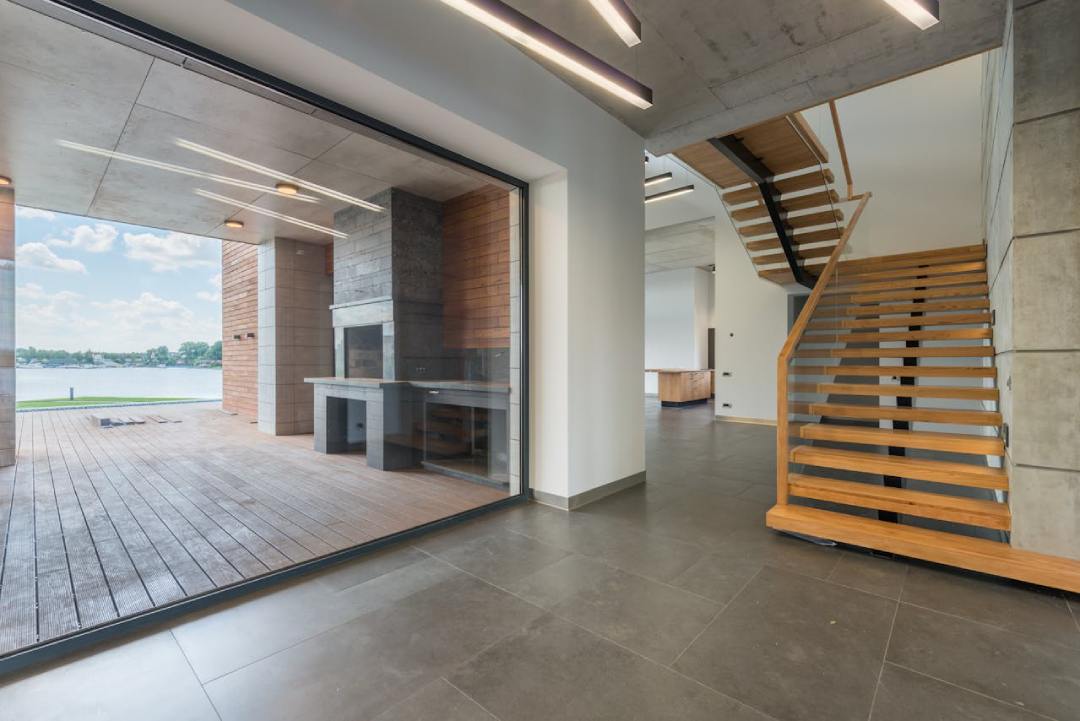

There are two primary ways of combining wood and tile flooring:
Here is a detailed guide on how to combine tile and wood flooring to create an amazing space at home.
Using wood in one room and tiles in another is the most common way to combine wood and tile flooring. Most prefer this option since it ensures a relatively easy and quick installation process. Rather than having your entire floor laid with tiles or wood, you may, for instance, use tiles for the kitchen area and wood for the living space.
As you already know, wood isn’t a particularly good flooring option for areas with lots of water or heavy traffic. On the other hand, tiles aren’t a good fit for living rooms since they can’t hold warmth as wood would. So, installing them in specific rooms ensures your home has an elegant, comfortable and durable floor.
There is typically a height difference you might have to deal with when you install a wood floor next to a tile floor. Since uniformity is an essential quality in floors, you need to find a way to fix the height mismatch once you finish laying your flooring material. It is advisable to use a transition strip rather than the more expensive alternative of lowering or raising one of the floors.
Although installing tiles and wood flooring in different rooms makes your work easier and faster, it might deny your floor the sophisticated touch that comes with combining the two in the same room. There are two primary ways of installing tiles and wood on the same floor:
While some people use a pony wall to divide an open room, others prefer using different flooring materials. After all, erecting a wall beats the purpose of leaving it as an open room.
Combining tile and wood flooring offers a cheaper alternative for dividing open rooms. For instance, if you have the kitchen and dining area in the same place, installing wood on the dining floor and tiles around the kitchen area is best.
Tiles are impervious to water damage, making them a good flooring option for areas around the kitchen sink and cooking spaces. On the other hand, wood is an elegant option that offers more comfort, the qualities you would want in your dining area.
When using tile and wood flooring to divide rooms, the line between the two materials doesn’t necessarily need to be horizontal. A diagonal or curved line might also work the magic, giving your floor the same classy, aesthetic and tidy touch you desire. Using a ‘non-straight’ line is a particularly good idea if the wood and tile flooring have different colours.
Another option for combining tile and wood flooring is creating patterns that interlock. Instead of using a single line between the tiles and wood, why not spice things up by creating amazing, classic patterns?
Combining tiles and wood flooring in this manner is typically a work of art reserved for decorative purposes. There is an endless list of classic patterns you can choose from. For instance, you can opt for a simple square or rectangular pattern or a more sophisticated star or triangle-shaped option. If you can’t settle on a particular pattern, the flooring expert will help you choose one that suits your room’s existing style.
It is not necessarily important to replicate the pattern in every room. You can pick a whole new style for each room.
READ MORE: What Are the Different Types of Wood Flooring
In an ideal world, a tile and wood combination will work in every case. But we don’t live in an ideal world, do we?
Before you combine wood and tile flooring, there are a few key considerations to take to ensure your floor doesn’t become an eyesore that’s expensive to get rid of.
When deciding whether to combine wood and tile flooring, it is essential to consider practicality. You should consider the purpose of the room and the challenges the flooring will most likely encounter.
For instance, installing a wood and tile floor in the bathroom might not be a great idea since wood is prone to water damage. But such a combination might work well in a hallway, where you need a flooring pattern that is both elegant and easier to maintain.
Once you ascertain a combination of wood and tiles will work in your room, it is time to choose the colours. There are lots of colours (light, medium, dark) and patterns (herringbone, chevron, plank) to choose from. However, to ensure uniformity, you should never mix dull and bright colours.
While shopping for floorwood, you will notice that the shades vary from one type to the other. However, there are not that many shades. And since you can practically find any tile colour, it is advisable to purchase wood before you shop for tiles.
Other key considerations when combining wood and tile flooring include picking the right transition ideas and consulting a flooring expert.
Although tiles and wood have very different properties, you can combine them to create a luxurious and stunningly beautiful floor. If you want to try this engineered wood flooring option, do not hesitate to contact Wood Flooring Ireland to book a consultation or get a free quote.